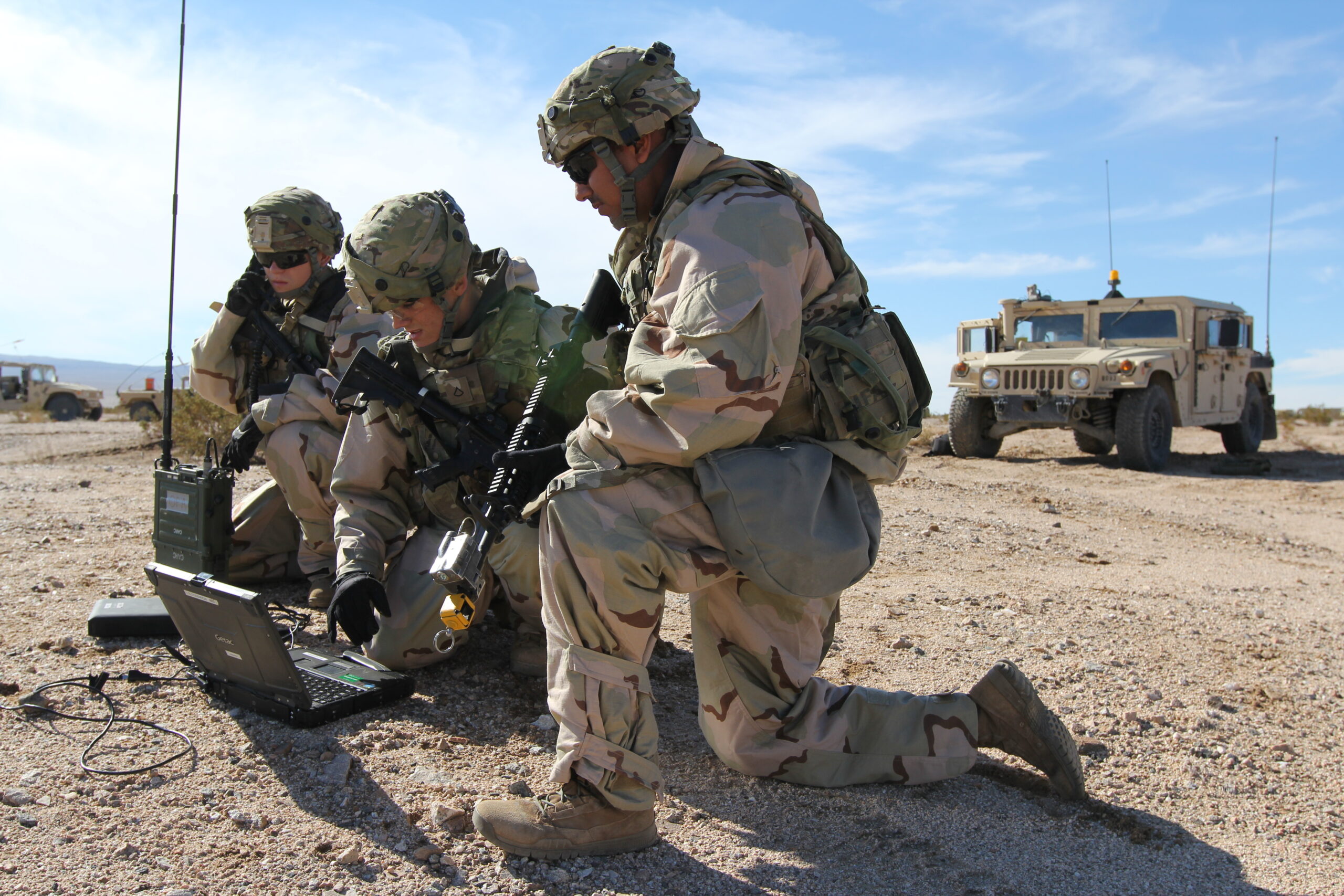SCOTT LEE

OPINION: At this point, it’s trite to say that the US spent the last 15 years focused on counterterrorism in the Middle East while China and Russia built up capabilities to counter the Pentagon — but being trite doesn’t mean it’s not true. As a result, we’ve become focused on exquisite platform and system-of-systems designs for individual domain supremacy, but not on improving our command and control (C2) capability.
If the US wants to keep ahead of Beijing and Moscow, we must eliminate the fixation on static plans, with their long decision timelines and approval processes and access to endless supplies. Dynamic operations must be the new normal, with the ability to operate when disrupted, distributed, and disaggregated when required.
To do this successfully, we must shift from domain-centric to mission-centric effects, planning and execution. And that has to start with rethinking our C2 from the ground up.
American and allied C2 processes were developed for fixed kill chains and individual services and domains, and the enabling C2 systems were largely designed with decades-old technology. Our C2 capabilities became rigid and inflexible in the last two decades because their use was largely unchallenged, and their modernization was not a priority. This wouldn’t be the case in high-intensity battles in the Baltics, Eastern Europe, or the South China Sea.
Today, planning, synchronization, and execution of combined operations at the speed required (minutes/seconds versus days/hours) are difficult, if not impossible. Legacy C2 execution is impeded by multiple barriers, including those between warfighting domains, across echelons and classification levels, between the military services themselves, and with allies and mission partners.
A new C2 architecture and organizational structure is needed. Commanders must be given the right data, with context, so they can exploit all relevant information to gain a clear understanding of the mission, situation, available resources, and force employment options.
To that angle, I put forth the following recommendations for a new C2 setup:
Shift the next generation C2 architecture from single military service and domain-centric operations centers to All-Domain Operations Centers (ADOCs) that are mission/function-oriented, distributed across operating areas, and employ conditions-based authorities. Connect them to cross-service multi-domain force packages and battle management teams at lower echelons. Integrate non-kinetic effects and traditional kinetic effects. Empower commanders at all levels to act on available, accessible, all-domain resources so they can use their initiative with a shared understanding of the higher commander’s intent and operational bounds, so that C2 degrades gracefully as communications are challenged.
Exploit shared, contextual situational understanding across all domain, service, and mission partners through ADOCs and battle management teams. Develop and automate operational processes and data feeds with a focus on mission-driven dashboards and digital running estimates. Break down the idea that we need a global common operational picture and access to all data everywhere.
Bring automation and the human-machine team to bear. Replace the staff-intensive coordination, synchronization, and deconfliction processes associated with deliberate single-domain planning with collaboration and dynamic tasking of integrated all-domain assets. Move away from focusing on manually built daily briefings and use dynamic data feeds relying on automation and new sources of data that provide digital running estimates.
Instead of building data lakes, expose data using published interfaces. This makes it easier for people to access data — and saves the services from trying to build a universal data standard or C2 language.
Create a communication network like a global spider web, providing commanders with multiple, diversified paths to the end point — so that even if the adversary takes away several communication paths, there are many other options. Such an agile and resilient global network will connect the ADOCs, multi-domain forces, and battle management teams. This will streamline information exchange and machine-to-machine communications.
The above calls for action are based on a clear-eyed view of the challenges we face.
Commanders need a mission-driven, all-domain situational awareness capability to improve decision-making speed and effectiveness. To enable commanders to optimize resources such as F-35s, Army Long-Range Hypersonic Weapons, or cyberattack options, we must integrate technologies such as artificial intelligence, machine learning, and real-time modeling and simulation. Moreover, for resilience in the face of attacks, the new C2 architecture must be designed for decentralized operation to enable widely distributed operations across a large battlespace.
A particularly compelling challenge facing the future force is meeting the rapid timelines required for finding, fixing, and engaging relocatable systems such as mobile missile launchers. This is essential, because peer adversaries are increasingly capable of attacking our critical assets via robust A2/AD defensive networks. Locating and destroying these targets will require new and innovative technologies in domain- and service-agnostic ways to dramatically accelerate all-domain effects chain functions.
And to provide commanders with mission-driven data that’s readily accessible in the heat of battle, it must be customizable into a single dashboard or display so they can focus on the fight at hand. Human-machine teaming can help commanders choose from the available attack options and better understand the current and projected situation and their strengths, weaknesses, and opportunities.
Further, collaborative operations and deconfliction can be aided via dynamic battlespace management processes that leverage the information and knowledge enabled through contextual awareness. We must define, model, and automate C2 workflows with this purpose in mind. We must also leverage automated data pipelines, including integrated analytics targeted to the mission.
As we look to the future and apply both the art and science of C2 to future warfighting, we must make the vision of better, faster decision-making across all domains a reality.
After all, the best way to avoid a high-end conflict is to be prepared for one.
Currently, we are not. And as stated in the 2018 National Defense Strategy, “America’s military has no preordained right to victory on the battlefield.”
Let’s act now to develop an entirely new approach to C2 and battle management.
No comments:
Post a Comment